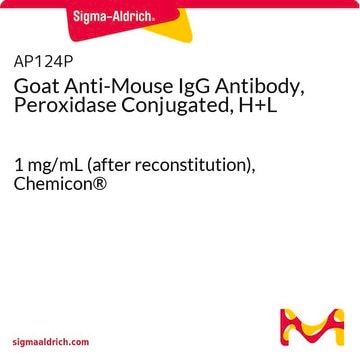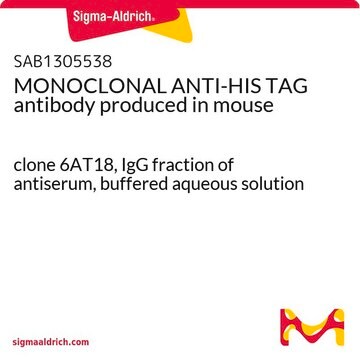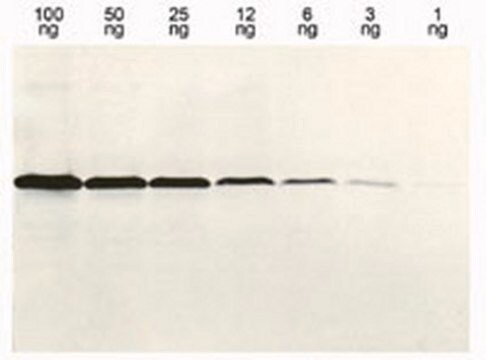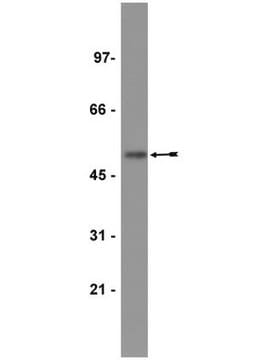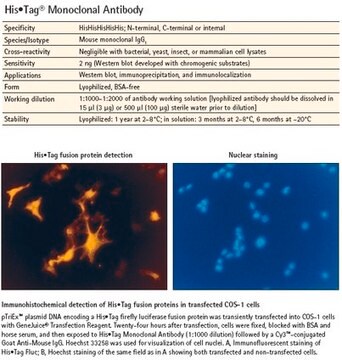11922416001
Roche
Anti-His6
from mouse IgG1
Synonyme(s) :
metal chelate affinity chromatography
About This Item
Produits recommandés
Source biologique
mouse
Niveau de qualité
Conjugué
unconjugated
Forme d'anticorps
purified immunoglobulin
Type de produit anticorps
primary antibodies
Clone
monoclonal
Forme
lyophilized
Conditionnement
pkg of 100 μg
Fabricant/nom de marque
Roche
Isotype
IgG1
Température de stockage
2-8°C
Catégories apparentées
Description générale
Spécificité
Application
- Immunoblotting (e.g., dot blots and western blots)
- Immunoprecipitation
- Immunoassays (ELISA)
- Immunocytochemistry
- Immunofluorescence
Notes préparatoires
Working concentration: Working concentration of conjugate depends on application and substrate.
The following concentrations should be taken as a guideline:
- ELISA: for detection 0.1 μg/ml; for coating 1 to 5 μg/ml
- Immunoprecipitation: 0.5 to 5 μg/ml
- Western blot: 0.2 to 0.5 μg/ml
Reconstitution
Autres remarques
Not finding the right product?
Try our Outil de sélection de produits.
Mention d'avertissement
Warning
Mentions de danger
Conseils de prudence
Classification des risques
Aquatic Chronic 3 - Skin Sens. 1
Code de la classe de stockage
11 - Combustible Solids
Classe de danger pour l'eau (WGK)
WGK 2
Point d'éclair (°F)
does not flash
Point d'éclair (°C)
does not flash
Certificats d'analyse (COA)
Recherchez un Certificats d'analyse (COA) en saisissant le numéro de lot du produit. Les numéros de lot figurent sur l'étiquette du produit après les mots "Lot" ou "Batch".
Déjà en possession de ce produit ?
Retrouvez la documentation relative aux produits que vous avez récemment achetés dans la Bibliothèque de documents.
Les clients ont également consulté
Notre équipe de scientifiques dispose d'une expérience dans tous les secteurs de la recherche, notamment en sciences de la vie, science des matériaux, synthèse chimique, chromatographie, analyse et dans de nombreux autres domaines..
Contacter notre Service technique